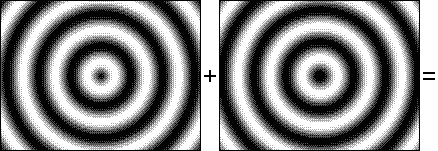Ok here's the theory I'm going by.
This is the Tesla disruptive discharge coil.

Uploaded with ImageShack.us
Which is from this book Page 173, further down is all the stuff Don says we need to
understand to do anything we want. This is downloadable for free. So far.
So far.
The inventions, researches and writings of Nikola Tesla, with special reference to his work in polyphase currents and high potential lighting : Martin, Thomas Commerford, 1856-1924 : Free Download & Streaming : Internet Archive
Obviously the coil above has it's secondaries wound opposite. So I might be wrong.
However the important difference is that I don't think he was using the two
HV terminals of this coil joined together and with reference to the center tap
and ground as the other side of an AC source.
And he obviously has the two leads from both primaries exiting the box in the
drawing below so, two primaries to use in different ways. He used it all kinds
of ways.
Here's a different drawing it's meant to go in a box full of oil.

Uploaded with ImageShack.us
And I'm fairly sure he was using AC to drive it with a circuit like this. Which appears
to have two primaries in series with the spark gap between them.
Strange circuit. Series caps.

Uploaded with ImageShack.us
So I think Don has used his initiative and designed a HV DC Tesla style primary circuit
and combined it with a modified center tapped/dual secondary wired to
charge caps between both end terminals and the center, with the ability to
adjust the V/A ratio by moving the primary, and I think he tuned the primary
cap value so to achieve maximum resonance while powering the load.
As he stated, this particular device is primitive, and I think any change in load
will require a change in tuning to maintain resonance.
Cheers
This is the Tesla disruptive discharge coil.

Uploaded with ImageShack.us
Which is from this book Page 173, further down is all the stuff Don says we need to
understand to do anything we want. This is downloadable for free.
 So far.
So far.The inventions, researches and writings of Nikola Tesla, with special reference to his work in polyphase currents and high potential lighting : Martin, Thomas Commerford, 1856-1924 : Free Download & Streaming : Internet Archive
Obviously the coil above has it's secondaries wound opposite. So I might be wrong.
However the important difference is that I don't think he was using the two
HV terminals of this coil joined together and with reference to the center tap
and ground as the other side of an AC source.
And he obviously has the two leads from both primaries exiting the box in the
drawing below so, two primaries to use in different ways. He used it all kinds
of ways.
Here's a different drawing it's meant to go in a box full of oil.

Uploaded with ImageShack.us
And I'm fairly sure he was using AC to drive it with a circuit like this. Which appears
to have two primaries in series with the spark gap between them.
Strange circuit. Series caps.

Uploaded with ImageShack.us
So I think Don has used his initiative and designed a HV DC Tesla style primary circuit
and combined it with a modified center tapped/dual secondary wired to
charge caps between both end terminals and the center, with the ability to
adjust the V/A ratio by moving the primary, and I think he tuned the primary
cap value so to achieve maximum resonance while powering the load.
As he stated, this particular device is primitive, and I think any change in load
will require a change in tuning to maintain resonance.
Cheers
 I've seen the result of it.
I've seen the result of it. So I guess its not the coils combined.
So I guess its not the coils combined.



 Thanks Z
Thanks Z 




Comment